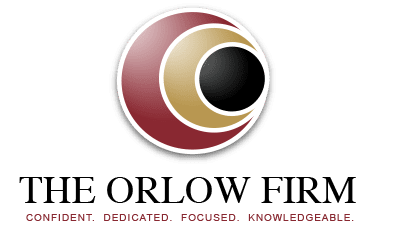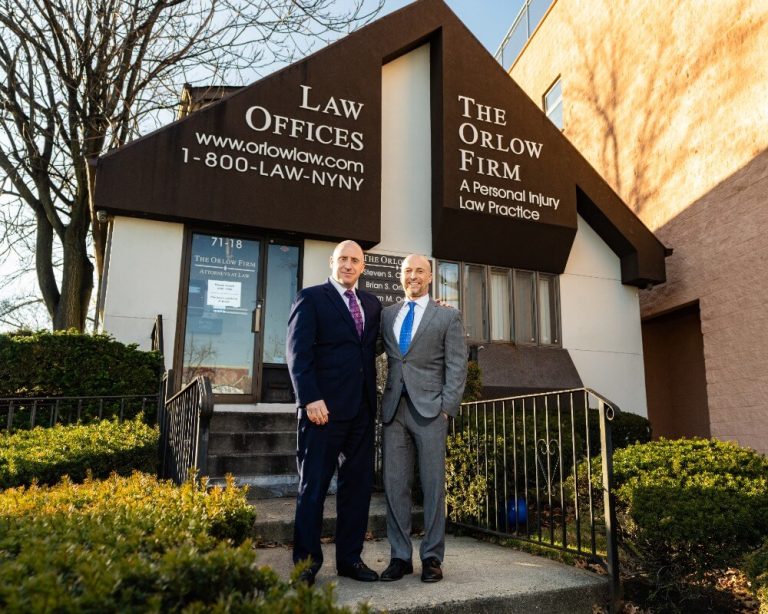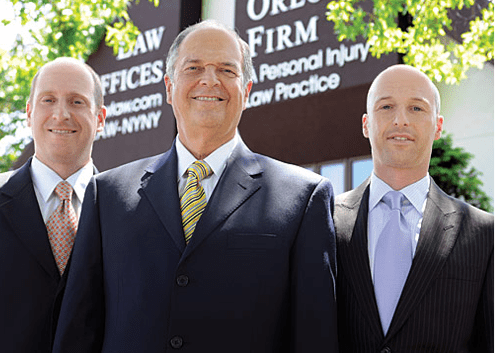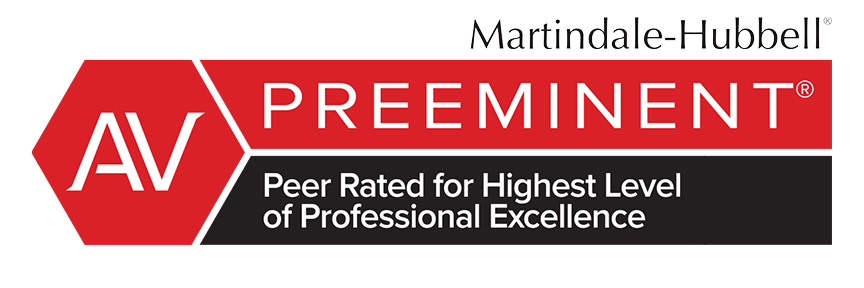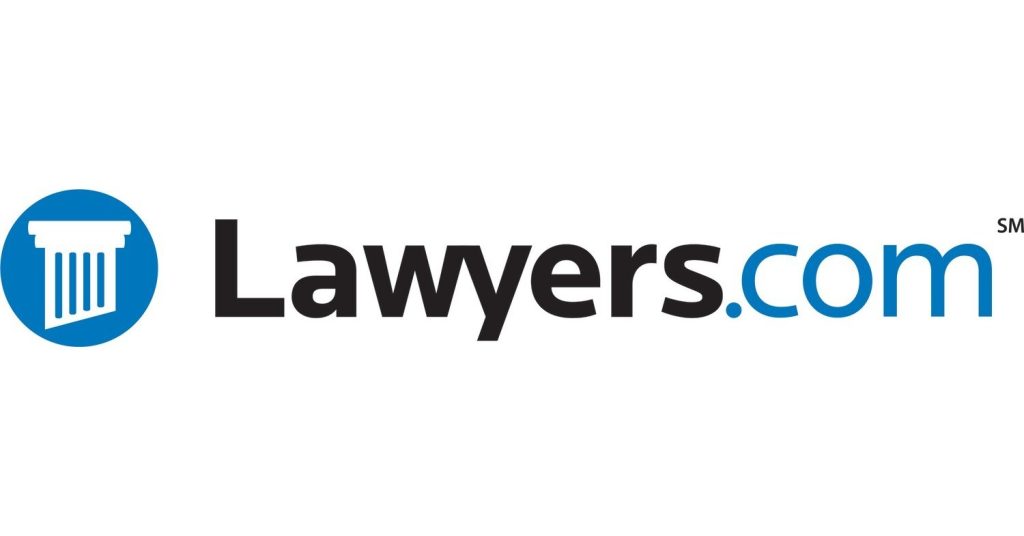The Following People Contributed to This Page
Cindy Cordova is a seasoned legal writer with over seven years of experience crafting clear, informative, and professional content for law firm websites. With a B.A. in English from Trinity Christian College, she combines her strong writing background with a deep understanding of legal topics to help firms connect with their clients through trustworthy and accessible content.
- August 3, 2025
What Happens When Employers Fail to Provide Safety Equipment on Construction Sites?
Quick Answer: When employers in New York City fail to provide required safety equipment on construction sites, they may be held legally responsible for any injuries that result. This can lead to workers’ compensation claims and, in some cases, personal injury lawsuits against property owners, contractors, or third parties.
If you or someone you love has been injured on a construction site, call The Orlow Firm, New York construction accident lawyers at (646) 647-3398 to understand your rights and legal options calling (646) 647-3398.
Consequences of Employers Failing to Provide Safety Equipment
When employers neglect their duty to provide proper safety equipment—also known as personal protective equipment (PPE)—the consequences can be wide-ranging and severe. The impact affects not only the injured worker but also the employer’s legal standing, site safety, and overall industry practices. Here’s a breakdown of what can happen:
1. Increased Risk of Accidents
Without essential safety equipment, construction workers face a much higher chance of being involved in serious accidents. These risks include:
- Falls from heights
- Electrical shocks
- Exposure to hazardous substances
Proper PPE—like harnesses, hard hats, gloves, and eye protection—is designed to reduce or eliminate these dangers. When it’s missing, workers are left unprotected.
2. Serious Injuries or Fatalities
Failing to provide basic safety gear dramatically raises the chances of devastating injuries or even death. Common injuries include:
- Head trauma from falling objects
- Severe cuts, punctures, or burns
- Broken bones or spinal injuries
These injuries often lead to long-term physical and emotional consequences for both the workers and their families.
3. Legal and Financial Repercussions for Employers
Employers have a legal obligation to maintain a safe workplace. When they ignore this duty:
- They may be cited and fined under 29 C.F.R. § 1926.28, which requires employers to ensure PPE is used where necessary.
- In New York City, the Department of Buildings may issue civil penalties, stop-work orders, and other enforcement actions under NYC Administrative Code § 28-207.
- Due to the exclusive remedy rule, employees usually cannot sue their employer directly—but they can bring civil lawsuits against property owners, general contractors, or third parties whose negligence contributed to the injury.
4. Violation of OSHA Regulations
The Occupational Safety and Health Administration (OSHA) requires employers to furnish a workplace free of known hazards. This includes providing the correct PPE.
- Violations can result in substantial fines.
- Repeated noncompliance may lead to increased inspections and scrutiny.
- Companies may suffer reputational damage, affecting future contracts and partnerships.
5. Decreased Worker Morale and Productivity
A site without basic safety protections sends a clear message to workers: their wellbeing isn’t a priority.
- Workers who feel unsafe are less engaged and less productive.
- High injury rates can lead to worker shortages, delays, and increased costs from training and turnover.
6. Negative Impact on Industry Standards
When employers cut corners on safety, it can set a dangerous precedent.
- Other companies may follow suit to stay “competitive,” leading to a broader decline in safety culture across the industry.
- Long-term, this undermines trust in construction firms and can provoke stricter regulation and enforcement.
Know Your Rights as a Construction Worker in NYC
If you’ve been injured because your employer failed to provide safety equipment, you have legal options. Depending on your case, you may be eligible for:
- Workers’ compensation benefits (medical expenses, lost wages, etc.)
- Personal injury claims against non-employer third parties (e.g., site owners, contractors)
- Additional compensation if the injury was caused by a violation of New York Labor Law § 240 or § 241
Get Help Today. Understanding your rights after a construction accident is critical. Let our experienced New York construction accident lawyers help you navigate the legal process. Contact The Orlow Firm at (646) 647-3398 to schedule a free, no-obligation consultation.
Attorney Advertising Disclaimer: This content is for informational purposes only and does not constitute legal advice. No attorney-client relationship is formed by reading this content or contacting the firm. Prior results do not guarantee a similar outcome.
Employer Negligence: The Consequences of Failing to Provide Safety Equipment on Construction Sites
Construction sites in New York City are inherently hazardous environments, where proper safety equipment can mean the difference between life and death. Unfortunately, when employers fail to provide or maintain adequate safety gear, the risk of accidents and injuries increases dramatically.
Common Safety Equipment Failures and Their Consequences
1. Lack of Personal Protective Equipment (PPE)
Personal Protective Equipment (PPE) includes hard hats, gloves, safety goggles, steel-toed boots, and protective clothing. These are essential for shielding workers from head injuries, chemical exposure, cuts, and foot injuries. When employers fail to provide or enforce the use of PPE, workers face unnecessary hazards such as:
- Head injuries from falling objects
- Chemical burns or respiratory damage
- Eye injuries from debris or dust
2. Inadequate Fall Protection
Falls are a leading cause of serious injury and death on construction sites. Employers are required to provide fall protection systems such as:
- Safety harnesses
- Guardrails
- Safety nets
Without these protections—or with inadequate training on their proper use—workers are left vulnerable to devastating falls from scaffolding, ladders, and rooftops. Under New York Labor Law § 240(1), employers may be held strictly liable for injuries resulting from such failures.
3. Exposure to Hazardous Substances
Construction workers may encounter toxic substances like asbestos, lead, and silica dust. Employers must provide proper respirators and ensure workers are fit-tested and trained to use them. Neglecting this requirement can lead to:
- Chronic respiratory diseases
- Skin conditions
- Long-term disability
4. Insufficient Hearing Protection
The loud environment on construction sites can cause permanent hearing loss over time. Despite this, earplugs and earmuffs are often overlooked or underused. Employers must ensure that workers are protected from excessive noise levels.
5. Faulty or Missing Safety Signs
Clear, visible safety signage helps prevent accidents by guiding workers away from danger zones. Missing or faded signs can lead to miscommunication and accidents, particularly in areas involving:
- Electrical work
- Open trenches
- Heavy machinery operation
6. Improper Use or Maintenance of Equipment
Safety gear and machines require regular inspection and upkeep. Employers who fail to maintain this equipment put workers at risk for:
- Machinery malfunctions
- Crushing injuries
- Amputations due to missing guards or failing safety switches
7. Electrical Hazards
Electrical work poses significant risks without proper precautions. Employers must provide insulated gloves, tools, and proper grounding systems. Failure to do so may result in:
- Electrical shocks
- Burns
- Electrocution
In New York City, employers are legally obligated to provide and maintain a safe working environment. This includes supplying safety equipment and training workers in its proper use. When they fail, they may be held liable for resulting injuries under state and federal laws, including OSHA regulations, NY Labor Law § 200, and NY Labor Law § 241(6).
If you or a loved one has been injured due to the lack of proper safety equipment, it’s important to understand your legal rights and options. For a confidential consultation, contact The Orlow Firm at (646) 647-3398 to speak with an experienced construction accident attorney.
Legal Obligations and Your Rights
In New York City, employers are legally required to maintain safe construction sites—including the provision of appropriate safety equipment. Construction is among the most dangerous industries, and failure to meet these obligations can result in serious injuries, fatalities, and significant legal consequences. Here’s a breakdown of the key legal requirements governing workplace safety in NYC construction:
1. Compliance with OSHA Standards
The Occupational Safety and Health Administration (OSHA) establishes federal safety standards that construction employers must follow. These include:
- Supplying personal protective equipment (PPE) such as helmets, gloves, goggles, and harnesses.
- Ensuring all PPE is in good condition and correctly used.
While OSHA sets the baseline, New York law often provides even greater protections for workers.
2. New York State Labor Laws
New York imposes specific construction safety laws under:
- Labor Law § 200 – Requires employers to provide a reasonably safe work environment.
- Labor Law § 240(1) (Scaffold Law) – Imposes strict liability for fall-related injuries due to insufficient fall protection.
- Labor Law § 241(6) – Requires compliance with Industrial Code rules for construction safety practices.
These laws give injured workers strong legal grounds to pursue compensation when employers fail in their safety obligations.
3. Site-Specific Safety Plans
Under NYC Building Code § 3310, major building projects (generally 10 stories or higher) require:
- A site-specific safety plan submitted by the permit holder.
- Strict compliance with Department of Buildings (DOB) guidance.
- Smaller sites must still follow safety provisions under Chapter 33 of the NYC Building Code, even if a formal plan is not required.
4. Training Requirements
Providing safety equipment alone is not enough. Employers must also:
- Train workers on how to properly use, maintain, and inspect their PPE.
- Educate them on the specific hazards of their tasks.
This is required under both OSHA standards and NYC’s Local Law 196 training requirements.
5. Routine Safety Inspections
Employers are responsible for:
- Conducting regular inspections of equipment and job sites.
- Promptly addressing any identified hazards or deficiencies to prevent accidents.
Failure to Comply: Legal Consequences
Employers who violate these obligations may face:
- Regulatory fines
- Civil lawsuits
- Strict liability under state law for injuries, especially involving falls
If you or someone you know has been injured due to missing or faulty safety equipment on a construction site, understanding these legal responsibilities is the first step toward seeking justice. For personalized legal assistance, contact The Orlow Firm at (646) 647-3398.
Attorney Advertising Disclaimer: This content is for informational purposes only and does not constitute legal advice. No attorney-client relationship is formed by reading this content or contacting the firm. Prior results do not guarantee a similar outcome.
Construction Site Safety in NYC: Workers’ Rights, Employer Responsibilities, and Legal Liabilities
Construction is one of the most dangerous industries in New York City. Given the height, machinery, and complexity of work involved, safety is not optional—it’s the law. Multiple layers of federal, state, and local regulations aim to protect workers and hold employers accountable for ensuring job site safety. When employers fail to meet these standards—especially by not providing required safety equipment—workers face serious risks, and employers face serious consequences.
This section outlines what the law requires, what rights workers have, and what happens when those rights are violated.
1. Legal Foundations for Construction Site Safety
1) OSHA Standards (Federal Law)
The Occupational Safety and Health Administration (OSHA) sets minimum safety standards for all U.S. workplaces, including construction sites. Key requirements include:
- Providing personal protective equipment (PPE) such as hard hats, gloves, goggles, harnesses, and respirators.
- Maintaining equipment in good condition.
- Training workers in a language they understand (per 29 CFR 1926.21).
2) New York State Labor Laws
New York offers additional, stricter protections:
- Labor Law § 200: Requires employers to provide a reasonably safe workplace and maintain safe equipment.
- Labor Law § 240(1) (“Scaffold Law”): Imposes strict liability for gravity-related injuries like falls from scaffolding or ladders. Contractors and property owners may be held liable regardless of fault.
- Labor Law § 241(6): Requires compliance with detailed safety rules found in the New York Industrial Code (12 NYCRR Part 23). Violations can form the basis of a personal injury claim.
3) New York City Building Code
NYC imposes local safety obligations through its Building Code, especially:
- § 3310: Requires site-specific safety plans for “major buildings” (10 stories or higher).
- § 28-207: Authorizes the Department of Buildings (DOB) to issue stop-work orders when safety violations are discovered, halting construction until resolved.
2. Workers’ Rights on NYC Construction Sites
Construction workers in New York City are protected by law and have the following rights:
1) Right to a Safe Workplace
Employers must supply and maintain all necessary safety equipment and ensure workers are not exposed to avoidable hazards.
2) Right to Report Safety Violations
Workers may file complaints with OSHA or the New York State Department of Labor without fear of retaliation. It is illegal for employers to fire, demote, or discriminate against workers who raise safety concerns (OSHA § 11(c)).
3) Right to Training
Workers must be trained on:
- How to use safety equipment
- Job-specific risks
- Emergency procedures
- Training must be provided in a language and vocabulary that workers can understand.
4) Right to Refuse Unsafe Work
Workers can legally refuse dangerous tasks if:
- They believe there’s a serious and imminent risk of injury or death
- There is not enough time to report the hazard to OSHA
- The employer has been asked to fix the hazard, and failed to act
(Per OSHA’s “Right to Refuse Dangerous Work” guidance)
5) Right to Compensation After Injury
Injured workers are generally entitled to workers’ compensation, which covers:
- Medical expenses
- Lost wages
- Rehabilitation costs
In limited cases, injured workers may also file lawsuits against:
- Third parties (e.g., subcontractors, property owners)
- Their employer, only if:
- The employer failed to carry workers’ compensation insurance, or
- The injury qualifies as a “grave injury” under WKC § 11 (e.g., amputation, blindness, death)
3. Employer Liabilities for Safety Failures
Employers who fail to provide legally required safety equipment may face:
1) OSHA Violations
- Citations
- Monetary fines
- Repeat or willful violations lead to higher penalties.
2) Stop-Work Orders (NYC)
The DOB can shut down worksites under Administrative Code § 28-207 until safety violations are corrected.
3) Workers’ Compensation Claims
- Covers injured workers regardless of fault
- Paid by the employer’s insurance, but repeated claims may increase premiums
4) Civil Personal Injury Lawsuits
Employers and third parties may face lawsuits when:
- A “grave injury” exception applies (against employers)
- A third party caused or contributed to the unsafe condition
- There was a violation of Labor Law §§ 240 or 241, which imposes strict liability on contractors and property owners
5) Reputational & Business Consequences
Poor safety records may harm an employer’s ability to:
- Obtain future permits or licenses
- Bid competitively on public or private contracts
- Maintain workforce trust and morale
Injured on a Construction Site? Know Your Rights.
If you or a loved one has been injured on a New York City construction site due to missing or defective safety equipment, you may be entitled to financial compensation through workers’ compensation, third-party claims, or both.
Understanding your rights is the first step. To speak with a dedicated legal team that focuses on construction accidents, contact The Orlow Firm at (646) 647-3398 for a free consultation.
Steps to Take if Injured Due to Missing Safety Equipment in NYC
If you’ve been injured on a New York City construction site due to missing or defective safety equipment, it’s essential to act quickly and deliberately. These steps not only protect your health but also your right to fair compensation under New York law.
1. Seek Immediate Medical Attention
- Prioritize your health—even if the injury seems minor.
- Get evaluated by a licensed medical professional.
- Keep all medical records, as they will support your claim later.
2. Report the Incident to Your Employer
- Notify your supervisor or site manager as soon as possible.
- Insist that an official accident report be filed.
- Be specific: note what safety equipment was missing and how it contributed to the incident.
- Request a copy of the incident report for your records.
3. Document the Scene and Your Injuries
-
Take clear photos of:
- The hazard (e.g., unguarded edge, broken scaffolding, lack of PPE)
- Your injuries
- Surrounding work conditions
- Get names and contact info of any witnesses.
4. Organize Your Records
-
Create a file containing:
- Medical records and bills
- Time off work and lost wages
- All written communication with your employer, insurance company, or OSHA
5. Understand Your Legal Rights
You are protected by multiple laws, including:
- OSHA regulations require employers to provide adequate PPE and training.
- New York Labor Law §§ 200, 240(1), and 241(6) – which hold contractors and property owners legally accountable for unsafe working conditions.
- Workers’ Compensation Law – provides no-fault benefits, even if you made a mistake.
6. Consult a Construction Accident Attorney
-
A lawyer can help determine if you have:
- A valid workers’ compensation claim
- A potential third-party lawsuit (e.g., against a subcontractor or equipment manufacturer)
- A Labor Law claim under § 240(1) or § 241(6), which may allow greater compensation
Important: Don’t wait. Delays in legal action or claim filings can limit your rights.
7. File a Workers’ Compensation Claim
- Notify your employer in writing within 30 days of the injury.
- File Form C-3 with the New York Workers’ Compensation Board.
- You may be eligible for:
- Medical treatment at no cost
- Partial wage replacement
- Disability benefits
Additional Legal Remedies
If your injury was caused by:
- Lack of fall protection
- Faulty equipment
- A third party’s negligence
…you may have a right to sue for pain and suffering, which is not covered under workers’ comp.
Need Help Understanding Your Rights? If you or a loved one has been injured on a construction site, knowing what to do next can be overwhelming. The legal team at The Orlow Firm has extensive experience handling New York construction accident cases.
Call (646) 647-3398 for a free, confidential consultation. We’ll help you understand your options, protect your rights, and fight for the compensation you deserve.
How The Orlow Firm Helps Injured Construction Workers in NYC
Construction site accidents caused by missing or faulty safety equipment can leave workers with life-altering injuries. At The Orlow Firm, we focus on protecting the rights of injured construction workers in New York City and holding negligent parties accountable.
Here’s how we can help:
1. Thorough Case Evaluation
Every case begins with a deep review of:
- The conditions of your worksite
- The type of safety equipment that was missing or defective
- The nature and extent of your injuries
We’ll determine whether you’re entitled to workers’ compensation, if Labor Law protections apply, and whether third-party liability can be pursued.
2. Guidance Through the Legal Process
Construction accident claims in NYC can involve:
- Workers’ compensation claims
- Personal injury lawsuits
- Labor Law § 240 and § 241 violations
We handle everything from initial claims to courtroom litigation. Our team ensures all documents are filed properly and within deadlines, so you can focus on healing while we manage the legal side.
3. Identifying All Liable Parties
Many construction injuries involve multiple responsible parties, such as:
- General contractors
- Subcontractors
- Property owners
- Equipment manufacturers
We conduct a full investigation to uncover every liable party under New York law—including strict liability claims under Labor Law § 240(1) for fall-related accidents.
4. Maximizing Your Compensation
Our goal is to pursue the full amount of compensation you’re entitled to, including:
- Medical expenses
- Lost wages
- Future earning capacity
- Pain and suffering
- Permanent disability or disfigurement
Whether negotiating with insurance companies or litigating in court, we fight to ensure your recovery is financially supported.
5. Compassionate, Ongoing Support
We understand the emotional toll an injury takes. That’s why we’re committed to:
- Keeping you informed every step of the way
- Answering your questions clearly and promptly
- Treating you with respect, not just as a case file
Injured on a Construction Site? Let Us Help.
If you or a loved one has been hurt due to missing or defective safety equipment on a construction site in New York City, don’t wait. You may have more legal options than you realize—including third-party lawsuits and Labor Law protections that go beyond workers’ comp.
Call The Orlow Firm at (646) 647-3398. Serving all boroughs of NYC: Bronx, Brooklyn, Manhattan, and Queens
Attorney Advertising Disclaimer: This content is for informational purposes only and does not constitute legal advice. No attorney-client relationship is formed by reading this content or contacting the firm. Prior results do not guarantee a similar outcome.
Frequently Asked Questions About Construction Safety Equipment Issues
When it comes to construction work in New York City, having the right safety equipment is not just important—it’s legally required. Below are answers to some of the most common questions about safety equipment, worker rights, and employer responsibilities.
1. What Types of Safety Equipment Should Be Provided on Construction Sites?
Employers are legally required to provide personal protective equipment (PPE) that is appropriate for the task. Common PPE includes:
- Hard hats
- Safety goggles
- Gloves
- High-visibility vests
- Fall protection gear (harnesses, lanyards, guardrails)
- Respirators or dust masks (for hazardous substances)
OSHA standards (29 CFR 1926) and New York Labor Law § 241(6) set specific requirements based on the type of work being performed.
2. What Happens If an Employer Fails to Provide Safety Equipment?
If an employer fails to supply required safety equipment and you are injured as a result:
- You may be eligible for workers’ compensation to cover medical bills and lost wages.
- You may also have a personal injury claim if another party was negligent or if your injury qualifies under Labor Law § 240(1) or § 241(6).
- In serious cases, the employer or property owner could face strict liability under New York law.
3. Can I Refuse to Work Without Proper Safety Equipment?
Yes, under federal law:
- You can refuse unsafe work if you reasonably believe it puts you at risk of serious injury or death.
- You must first notify your supervisor and request that the hazard be corrected.
- If the issue remains unresolved and there isn’t time to contact OSHA, you may legally refuse the task.
This is supported by OSHA’s “Right to Refuse Dangerous Work” guidance.
4. How Do I Report Safety Equipment Violations?
You can report unsafe conditions to:
- Your supervisor or job site safety officer
- Your union representative (if applicable)
- The Occupational Safety and Health Administration (OSHA)
- The NYC Department of Buildings (DOB) for city-specific code violations
Important: Federal law (OSHA § 11(c)) protects workers from retaliation for reporting safety concerns.
5. What Should I Do If I’m Injured Due to Missing Safety Equipment?
Take these steps immediately:
- Seek medical care – even if the injury seems minor.
- Report the injury to your employer and request an official incident report.
- Document everything – take photos, gather witness names, and keep all records.
- File a workers’ compensation claim through your employer.
- Consult a construction accident attorney to determine if you also have a personal injury case under state law.
6. Are There NYC-Specific Safety Equipment Regulations?
Yes. In addition to OSHA and state laws:
- The New York City Building Code (Chapter 33) requires site-specific safety measures.
- Section 3310 mandates safety plans for large projects.
- Section 28-207 gives the NYC Department of Buildings the authority to issue stop-work orders if safety laws are violated.
7. Do I Need a Lawyer If I’ve Been Injured?
While workers’ compensation may cover basic benefits, you should consult an attorney if:
- Your injury was caused by missing or faulty safety equipment
- You suspect your employer or a third party was negligent
- You’re unsure if your rights were violated under Labor Law §§ 200, 240(1), or 241(6)
A qualified attorney can help you maximize your compensation and protect your legal rights.
Need More Help?
At The Orlow Firm, we specialize in construction accident cases throughout New York City. If you’ve been injured due to missing safety equipment, we’re here to help you understand your legal options and fight for the compensation you deserve.
Call us today at (646) 647-3398 for a free consultation.
Contacting a Lawyer for Construction Site Safety Concerns in NYC
If you or a loved one has been injured on a construction site in New York City due to an employer’s failure to provide necessary safety equipment, contacting a lawyer is an essential step in protecting your rights and pursuing potential compensation. Navigating the complexities of construction site injury claims can be daunting—especially when facing serious injuries and uncooperative employers or insurance companies. Here’s why reaching out to a legal professional can make a significant difference:
- Understanding Your Rights: Construction workers in NYC are protected by various laws and regulations designed to ensure their safety. A knowledgeable attorney can help you understand these rights and determine whether they were violated due to the absence of required safety equipment.
- Evaluating Your Case: An experienced lawyer will assess the specifics of your incident, including the conditions of the accident and the severity of your injuries. They can identify whether the lack of safety equipment directly contributed to your injury and whether there are legal grounds for a personal injury claim in addition to workers’ compensation.
- Navigating Legal Complexities: Construction accident cases often involve multiple potentially liable parties—such as general contractors, subcontractors, site owners, or equipment manufacturers. A lawyer can help you navigate these complexities and ensure that all responsible parties are held accountable under New York law.
- Maximizing Compensation: An attorney will work to secure the maximum compensation available to you. This may include recovery for:
- Medical expenses
- Lost wages
- Pain and suffering
- Future rehabilitation or disability-related costs
- Negotiating with Insurance Companies: Insurance companies frequently attempt to minimize payouts. Having an attorney on your side can level the playing field and help ensure that you receive a fair settlement that reflects the full impact of your injuries.
- Litigation Support: If a fair settlement cannot be reached through negotiation, your attorney can prepare to take your case to court. They will advocate on your behalf throughout litigation to achieve the best possible outcome.
It’s important to act quickly if you’ve been injured. New York has strict statutes of limitations that govern how long you have to file a claim. Delaying legal action could jeopardize your ability to recover compensation.
For personalized legal guidance and to discuss your specific situation, contact The Orlow Firm at (646) 647-3398. Our dedicated team is here to provide the support and representation you need during this challenging time.
Attorney Advertising Disclaimer: This content is for informational purposes only and does not constitute legal advice. No attorney-client relationship is formed by reading this content or contacting the firm. Prior results do not guarantee a similar outcome.
The Following People Contributed to This Page
Cindy Cordova is a seasoned legal writer with over seven years of experience crafting clear, informative, and professional content for law firm websites. With a B.A. in English from Trinity Christian College, she combines her strong writing background with a deep understanding of legal topics to help firms connect with their clients through trustworthy and accessible content.
